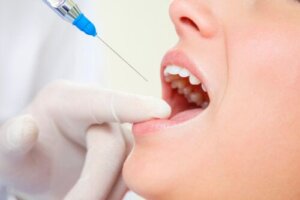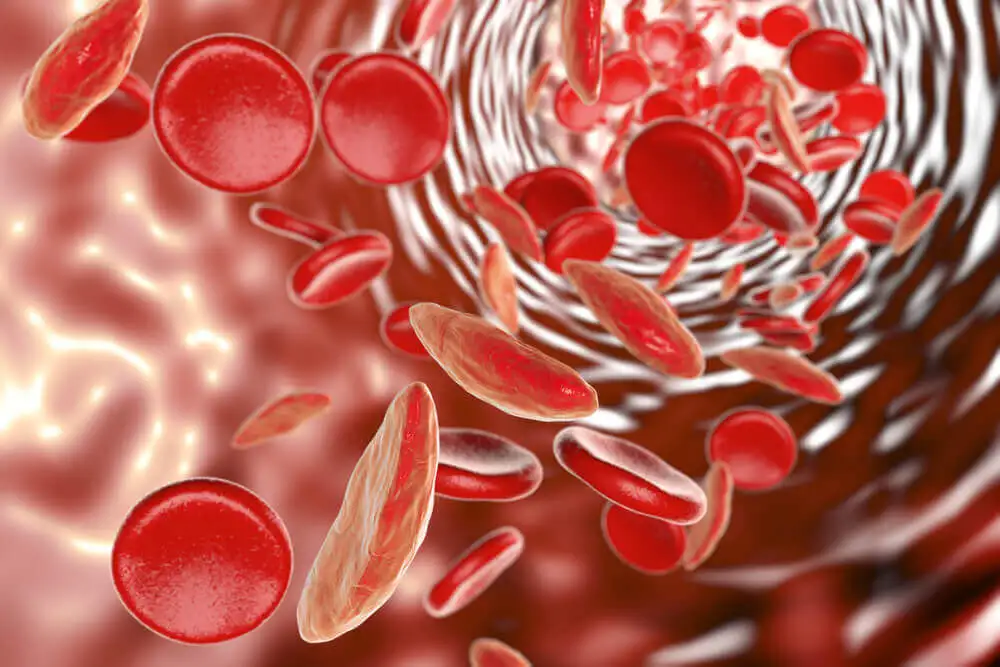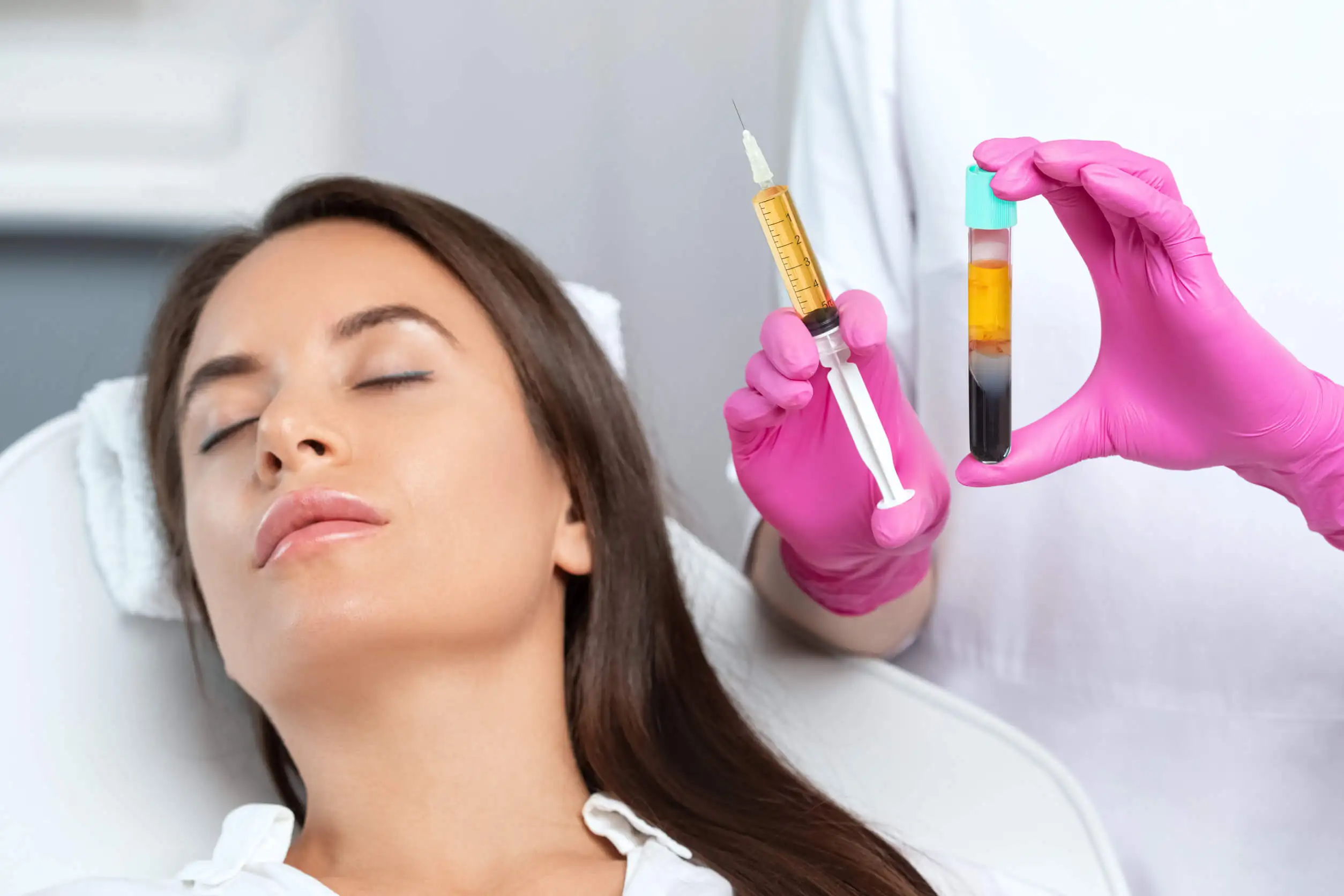Plasma Rich in Growth Factors: Oral Health Uses


Written and verified by the dentist Vanesa Evangelina Buffa
The use of plasma rich in growth factors (PRGF) is gaining prominence in the oral health field. Relying on the help of this fluid for dental treatments improves results and accelerates recovery.
However, many people are unaware of what this innovative therapy is all about, even though more and more dentists are suggesting it to their patients.
Here we’ll tell you in detail how and why plasma is used in oral health and what its advantages are. Read on and discover this new therapy.
What is plasma rich in growth factors and how does it work?
When our body suffers a wound or injury, the tissues start a repair process. In this process, a series of proteins known as “growth factors” are released. They stimulate the natural healing and regeneration of the damaged area.
Plasma is the main component of blood. And, although it’s liquid in nature, it contains solid components that can be separated and used with special techniques.
The use of plasma rich in growth factors is a technique that isolates the proteins responsible for tissue regeneration from the patient’s own plasma. To do this, a blood sample is taken and then processed, separating the components responsible for tissue recovery.
These proteins or growth factors are found inside platelets. By isolating them, you can prepare them to take advantage of their ability to rebuild damaged tissues.
Once isolated, the product obtained is applied to the wound area to accelerate and promote its recovery. This enhances the body’s self-healing properties.
Plasma rich in growth factors is considered state-of-the-art technology in the field of regenerative medicine. And it’s an autologous alternative, i.e. one taken from the patient’s own body. This reduces the risk of side effects, such as rejection or inflammation.
The use of plasma rich in growth factors hasn’t only gained popularity in the field of oral health. It’s also used in other areas of medicine, such as cardiac, vascular, plastic, and dermatological surgeries. It’s also used to aid recovery from sports injuries and in orthopedic surgeries.
Read more here: Medications that Can Increase Blood Sugar
Main uses of plasma in oral health
Oral health is one of the many areas where plasma rich in growth factors is beneficial. Complementing dental treatments with this technique allows you to improve and accelerate the recovery of the intervened tissues.

These are the dental procedures that benefit from the use of plasma rich in growth factors:
Dental implants
When placing a dental implant it’s necessary to perform a surgical intervention. The gum and the bone are drilled into, in order to insert the screw into the bone. The artificial teeth that will rehabilitate the mouth are then placed on this attachment.
If the healing process of this intervention fails, the treatment fails. The new tooth will fall out and the patient will suffer discomfort. Therefore, a correct recovery of the tissues is fundamental for the implant to fulfill its function.
The use of plasma rich in growth factors favors the healing and recovery of the operated area. It helps the wound to close properly and in less time.
This not only improves osseointegration and the quality of the bone mass, but also promotes the sustainability of the implant. It also reduces inflammation and postoperative discomfort, as well as reducing the risk of complications.
Shortening tissue recovery times is especially important in dental implant treatments. This allows the definitive prosthesis to be placed on the screws much sooner, 2 or 3 months after the surgery.
This treatment allows the patient to recover their smile in a fast, stable way. In times when the appearance of the smile is so important, not having to wait as long to recuperate the teeth is a great advantage.
In implant procedures, plasma rich in growth factors can be used in two ways:
- Applying it directly on bone and mucosal tissues during surgery.
- Performing a treatment on the surface of the implants with plasma.
Alveolar bone loss
Tooth loss and a lack of proper rehabilitation lead to the thickness and height of the bone that contained the teeth being lost. A lack of stimulation in the area causes bone resorption.
As a result, the height of the jaws decreases. This affects the physiognomy of the face and the health of the remaining teeth and the temporomandibular joint (TMJ).
In addition, bone loss hinders rehabilitation treatments, both for the insertion of implants and for the placement of prostheses. Without bone, there’s no support for dentures.
Using plasma with growth factors helps to recover lost bone thickness. And, with this, treatments to rehabilitate the smile will be viable.
Periodontics
People who suffer from pyorrhea or periodontal disease suffer from the destruction of the tissues that support the teeth. The damage occurs as a consequence of an inflammatory and infectious process that develops deep in the gum.
The loss of gum, cementum, periodontal ligament, and alveolar bone leads to a lack of fixation of the teeth. Without sufficient support, it’s common for teeth to move and even come out.
The use of plasma rich in growth factors in periodontal treatments helps damaged tissues to recover. The application of this product promotes bone regeneration and gum healing.
Extractions and oral surgeries
Tooth extraction is always the last resort. Attempts are first made to preserve natural teeth, but sometimes this isn’t possible.
In cases where tooth extraction is indicated and unavoidable, the use of plasma rich in growth factors can provide benefits. Placing the product in the operated area favors and accelerates the recovery of tissues, and reduces discomfort, inflammation, and pain.
It’s especially useful in cases of extractions in patients with bone loss, periodontal defects, or who carry dental implants. It also helps greatly after the removal of cysts and infectious processes, and to treat oral and sinus communications.
Endodontics
Regenerative endodontics is a field of dentistry that’s beginning to develop. The use of plasma rich in growth factors in this area of oral health still requires further study.
However, the results of the research so far are promising. The use of plasma would be useful in cases of external resorptions, dental reimplantation, direct pulp protection, and revascularizations that favor apical closure.
Advantages of the use of plasma rich in growth factors in oral health
We have already mentioned that the use of plasma rich in growth factors provides multiple benefits in oral health treatments. The most important ones are listed below:
- Improves the regeneration and healing of mucosa and soft tissues
- Reduces post-surgical bleeding
- Reduces inflammation and pain after surgery
- Accelerates the postoperative recovery process
- Promotes bone regeneration
- It’s biocompatible: It’s a product originating from the patient’s own body.
- The risks of side effects are minimal.
- It reduces the risk of infections and post-surgical complications.
- It’s obtained easily, without discomfort, and using very little blood.
- As it’s autologous, that is, originating from the patient himself, it isn’t necessary to go to donors or blood banks. And there are no compatibility or rejection problems.
- It recovers bone mass in the jaws, which makes it possible to place implants where it wasn’t possible to do so before.

How is the intervention performed?
Obtaining plasma rich in growth factors to perform an oral health intervention is quite simple. The following steps can be highlighted in the process:
- Extraction of blood from the patient. This is performed in the same way as in a sample for a blood test. A small amount is sufficient.
- Isolation of platelets. This is achieved by centrifuging the blood sample at high speeds.
- Separation of the plasma rich in growth factors. With an anticoagulant, for direct use.
- Creation of an autologous fibrin membrane. This is another way to manipulate the product. Calcium chloride is added to obtain a fibrin clot rich in growth factors.
This technique must be performed by qualified personnel. Compliance with strict biosafety standards and having the relevant approvals from the health authorities are essential to perform this procedure.
Once the plasma or the fibrin mesh has been obtained, it’s placed in the oral area to be treated. That is to say, in the vicinity of the implants or where the dental extraction has been performed. Its presence will promote healing and tissue repair.
Plasma rich in growth factors is an extra help in oral health
Any patient with adequate oral and general health can have access to the use of plasma rich in growth factors. And it can be applied at any time of life; in children, adolescents and adults.
This technique is especially beneficial in smokers or diabetic patients, in whom healing is impaired. The tendency of these people to suffer infections or not to repair wounds can be corrected by applying plasma.
And, as we have told you, obtaining it is simple, fast and convenient. With a small sample of blood, it’s possible to help the tissues of the mouth to regenerate and repair themselves. Also, as it’s a product obtained from the patient’s own body, it doesn’t carry any risk.
In conclusion, using plasma rich in growth factors brings benefits to oral health. With this extra help, your mouth can look beautiful and healthy sooner!
All cited sources were thoroughly reviewed by our team to ensure their quality, reliability, currency, and validity. The bibliography of this article was considered reliable and of academic or scientific accuracy.
- Kundu, R., & Rathee, M. (2014). Effect of platelet-rich-plasma (PRP) and implant surface topography on implant stability and bone. Journal of clinical and diagnostic research: JCDR, 8(6), ZC26.
- Sánchez‐Ilárduya, M. B., Trouche, E., Tejero, R., Orive, G., Reviakine, I., & Anitua, E. (2013). Time‐dependent release of growth factors from implant surfaces treated with plasma rich in growth factors. Journal of Biomedical Materials Research Part A, 101(5), 1478-1488.
- Cisneros, H. L. R., Rozas, H. A. R., Rozas, H. A. R., & Cisneros, H. L. R. Plasma Rico en Plaquetas y su aplicación en la odontología: revisión de literatura.
- Bravo, E., & Oliva, P. (2013). Efectividad del plasma rico en plaquetas en la cicatrización de implantes dentales: una revisión sistemática. International journal of odontostomatology, 7(1), 87-92.
- Eduardo A. Anitua; Enhancement of Osseointegration by Generating a Dynamic Implant Surface. J Oral Implantol 1 April 2006; 32 (2): 72–76. doi: https://doi.org/10.1563/736.1
- Dos Santos, E. A. (2020). PLASMA RICO EN PLAQUETAS EN LA REGENERACIÓN ÓSEA DE ALVÉOLOS DENTARIOS POST-EXODONCIA. Salud & Vida Sipanense, 7(1), 45-55.
- Peña-Sisto, M. (2022). Evolución de defectos óseos periodontales tratados con plasma rico en plaquetas. Revista de Ciencias Médicas de Pinar del Río, 26(3), 5220.
- Cumming, A. (2021). Does the use of plasma rich in growth factors (PRGF) produce benefits for patients with chronic periodontal disease in non-surgical treatment?. BDJ Team, 8(8), 16-17.
- Navarrete Vidal, I. G. (2021). Plasma rico en plaquetas para el cierre de la comunicación bucosinusal (Bachelor’s thesis, Universidad de Guayaquil. Facultad Piloto de Odontología).
- Coniberti, M. E. (2020). Endodoncia regenerativa (Doctoral dissertation, Universidad Nacional de Cuyo. Facultad de Odontología).
This text is provided for informational purposes only and does not replace consultation with a professional. If in doubt, consult your specialist.








